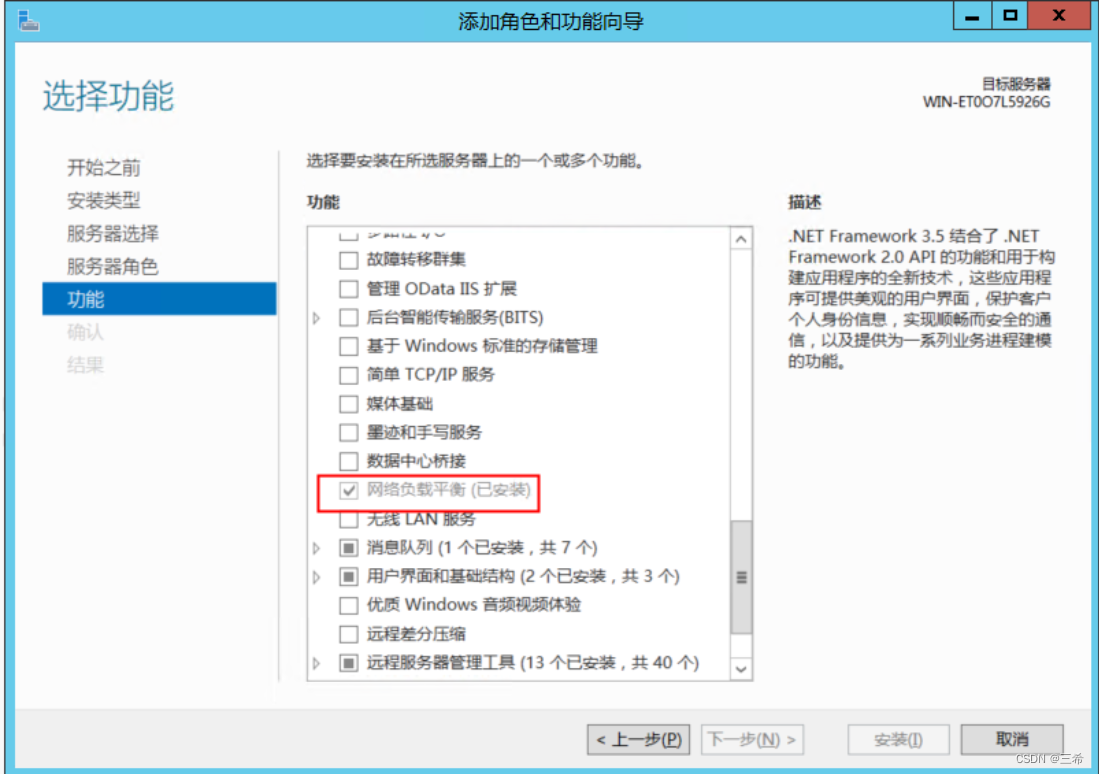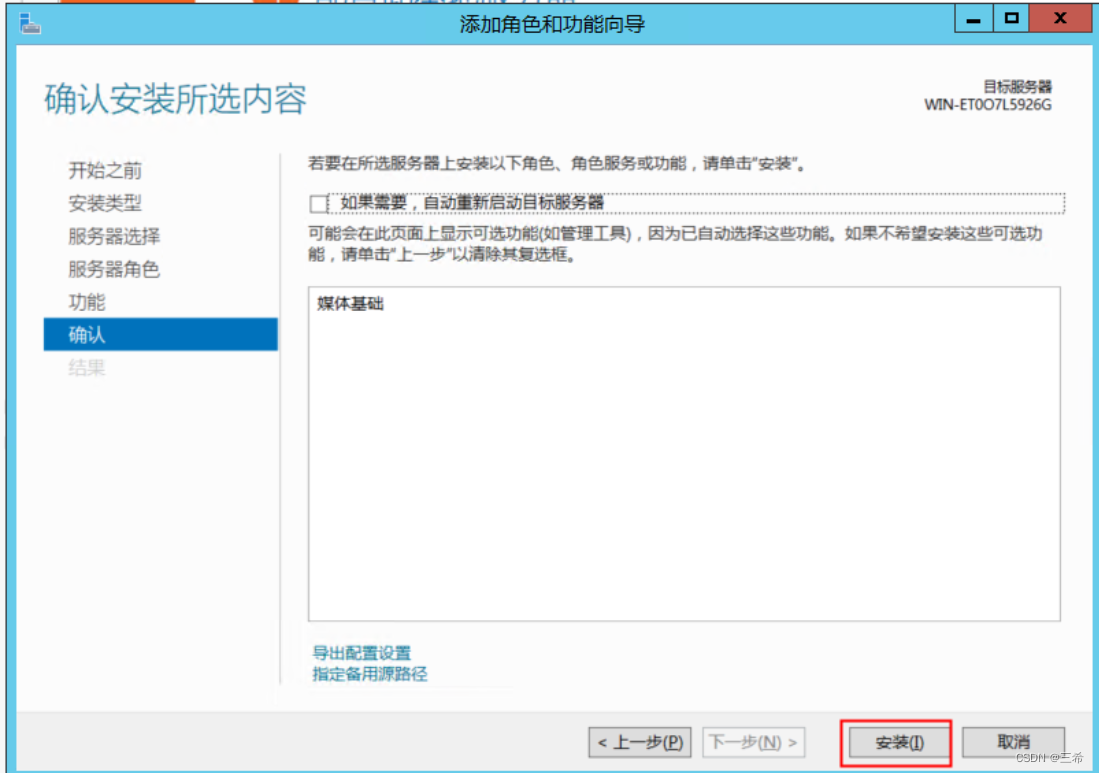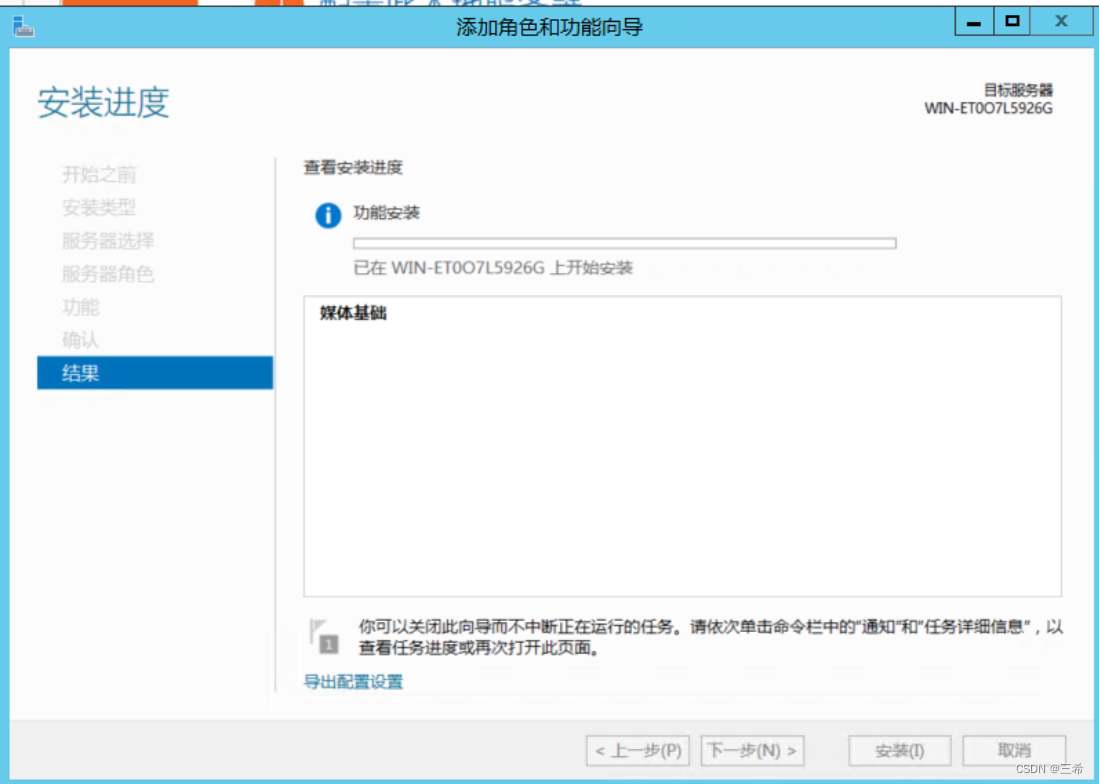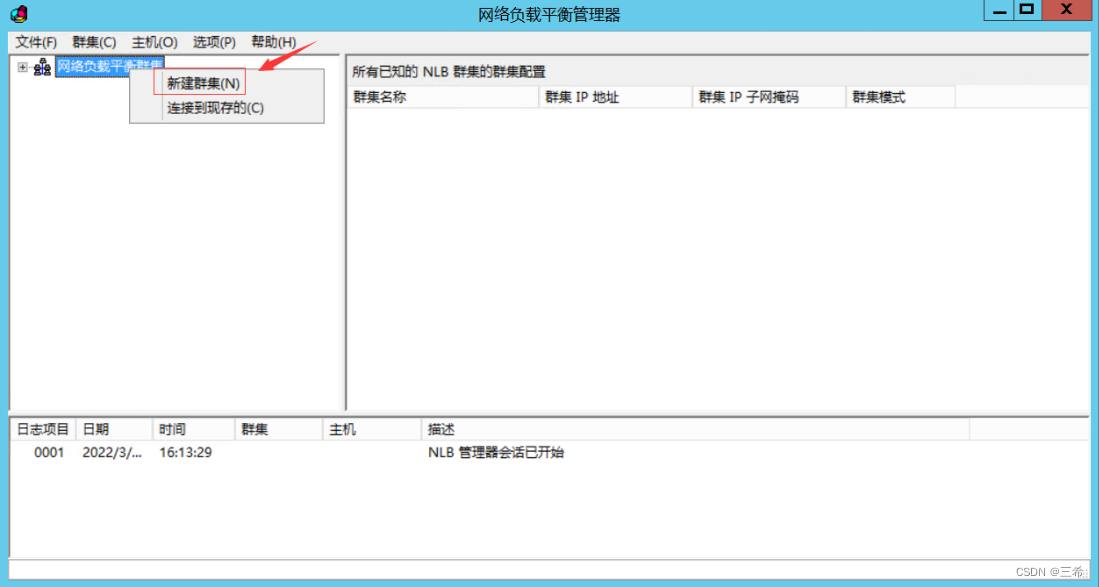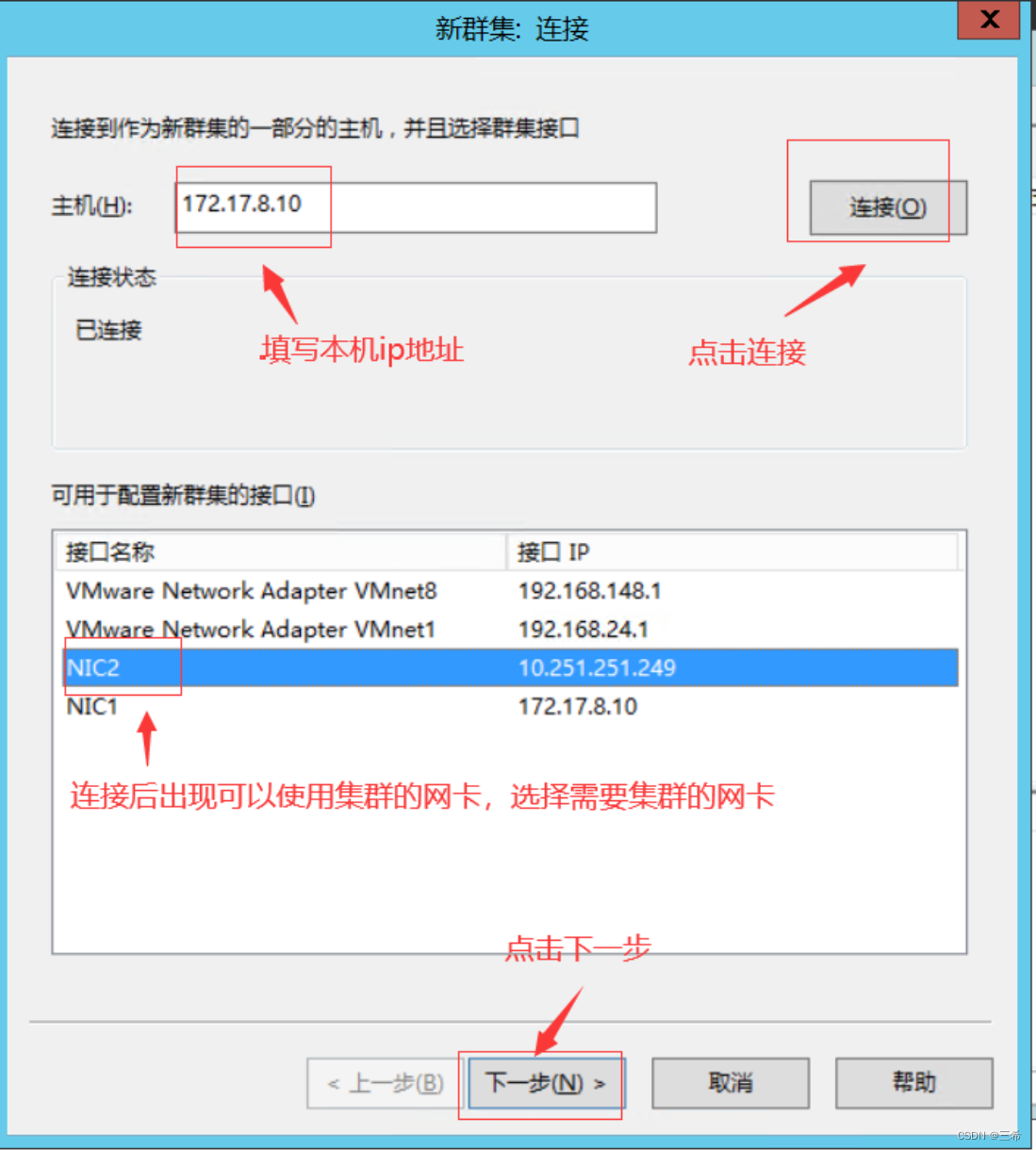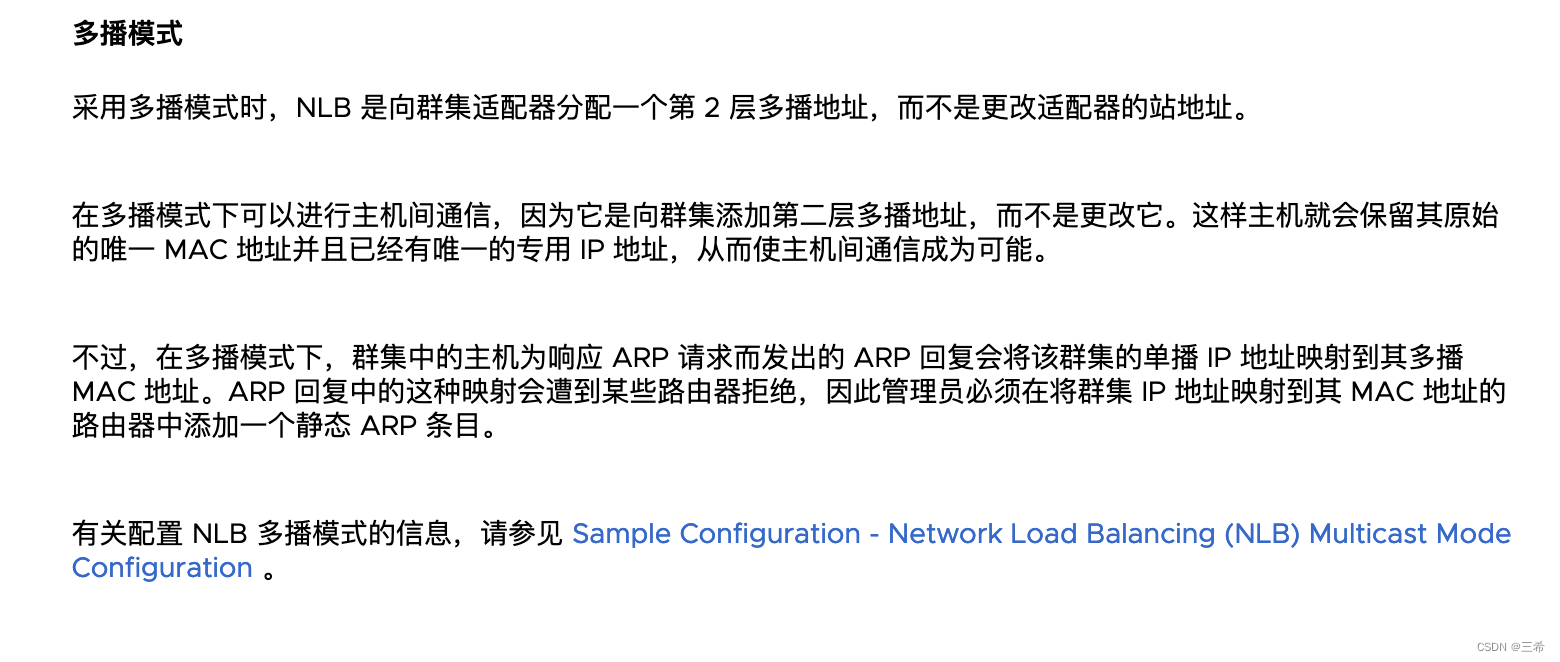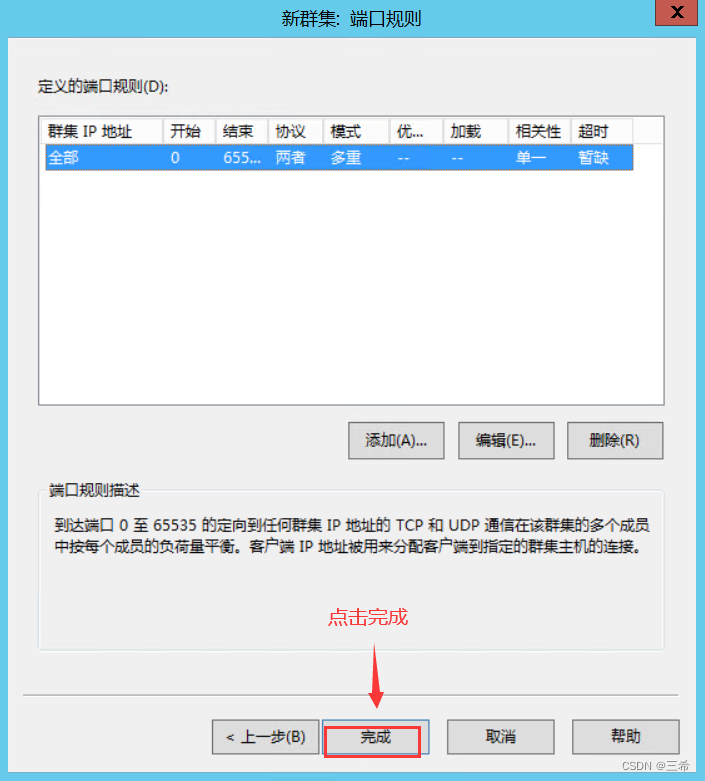| windows服务器热备、负载均衡配置 | 您所在的位置:网站首页 › 服务器网络负载均衡怎么调 › windows服务器热备、负载均衡配置 |
windows服务器热备、负载均衡配置
|
找到控制面板在控制面版中找到下图选项,点击启用或关闭windows功能
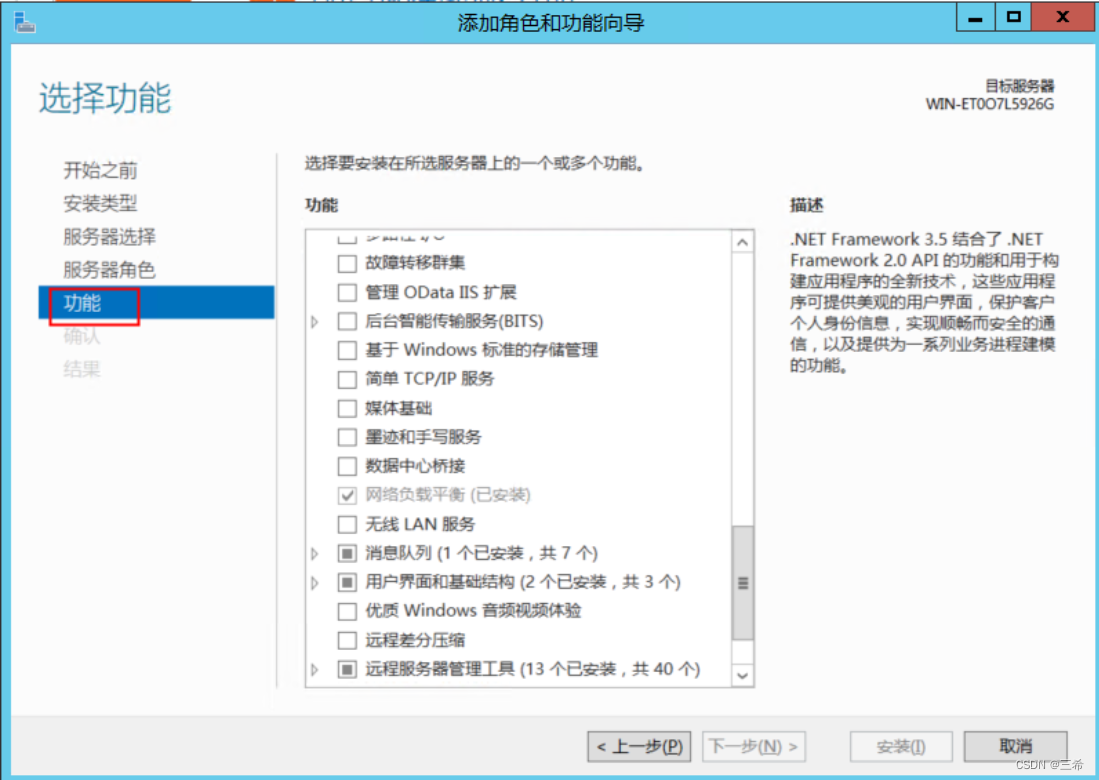
在所有选择中找到下图的选项。点击下一步
确认选择的安装组件,然后点击安装。
等待安装完成
安装完成之后,关闭 (安装成功后需重启计算机)。
安装方式1 REM 启用网络负载平衡管理器 dism.exe /online /enable-feature /featurename:NetworkLoadBalancingFullServer /norestart REM 禁用网络负载平衡管理器 dism.exe /online /disable-feature /featurename:NetworkLoadBalancingFullServer /norestart安装方式2 使用 Windows PowerShell 安装若要使用 Windows PowerShell 安装 NLB,请在要安装 NLB 的计算机上,在提升的 Windows PowerShell 提示符处运行以下命令。 PowerShell复制 Install-WindowsFeature NLB -IncludeManagementTools安装完成后,无需重启计算机。 配置网络负载平衡 图形化配置在开始菜单中搜索网络负载平衡管理器,找到组件选项,打开。
下图是进入之后的页面,鼠标右键点击“网络负载平衡管理器”。
填写好创建集群的电脑IP地址进行连接,之后下方选项栏里会出现本机服务器的网卡,选择要进行集群的网卡,然后点击下一步。
选择本机电脑所添加的优先级别(后续添加完成之后是可以修改的)选择之后,点击下一步
点击添加
图中IPv4地址,是这个集群的虚拟ip(VIP)设置好之后点击确定
确认添加成功之后点击下一步
根据实际情况选择单播,或者多播,选择完成之后点击下一步 单播和多播的区别: VMware Knowledge Base
点击完成之后,集群就已经建立成功了。
在点击刚建立好的集群,可以看到状态,状态为“已启用”说明集群创建完成了
搜索需要进入这个集群的服务器IP,选择好网卡之后,点击下一步
点击链接的时候报错如下
解决办法: https://blog.51cto.com/149banzhang/835118
选择优先级,点击下一步
点击完成,加入主机完成
在使用另一台需要进入集群的服务器搜索创建的集群IP,加入集群。
输入搜索要加入的集群IP,在下图群集中可以看到搜索到的集群,选择要加入的集群,点击完成进入集群
脚本代码 REM 待补充 Network Load Balancing (NLB) Cmdlets in Windows PowerShellWindows PowerShell® 是基于任务的命令行 shell 和脚本语言,专为系统管理而设计。本参考主题面向信息技术 (IT) 专业人员,可在利用 Windows PowerShell cmdlet 编写脚本和对任务实施自动化时提供协助。 cmdletDescriptionAdd-NlbClusterNode Adds a new node to the Network Load Balancing (NLB) cluster. Add-NlbClusterNodeDip Adds a dedicated IP address to a Network Load Balancing (NLB) cluster. Add-NlbClusterPortRule Adds a new port rule to a Network Load Balancing (NLB) cluster. Add-NlbClusterVip Adds a virtual IP address to a Network Load Balancing (NLB) cluster. Disable-NlbClusterPortRule Disables a port rule on a Network Load Balancing (NLB) cluster or on a specific host in the cluster. Enable-NlbClusterPortRule Enables a port rule on a Network Load Balancing (NLB) cluster or on a specific node in the cluster. Get-NlbCluster Retrieves information about the Network Load Balancing (NLB) cluster object that is queried by the caller. Get-NlbClusterDriverInfo Retrieves information about the Network Load Balancing (NLB) driver on the local machine. Get-NlbClusterNode Retrieves information about the Network Load Balancing (NLB) cluster object that is queried by the caller. Get-NlbClusterNodeDip Retrieves the dedicated IP address that is queried by the caller. Get-NlbClusterNodeNetworkInterface Retrieves information about interfaces, including information about the Network Load Balancing (NLB) driver, on a host. Get-NlbClusterPortRule Retrieves the port rule objects that are queried by the caller. Get-NlbClusterVip Retrieves virtual IP addresses that are queried by the caller. New-NlbCluster Creates a Network Load Balancing (NLB) cluster on the specified interface that is defined by the node and network adapter name. New-NlbClusterIpv6Address Generates IPv6 addresses to create cluster virtual IP addresses or node dedicated IP addresses. Remove-NlbCluster Deletes a Network Load Balancing (NLB) cluster. Remove-NlbClusterNode Removes a node from the Network Load Balancing (NLB) cluster. Remove-NlbClusterNodeDip Removes a dedicate IP address from a Network Load Balancing (NLB) cluster. Remove-NlbClusterPortRule Removes a port rule from a Network Load Balancing (NLB) cluster. Remove-NlbClusterVip Removes a virtual IP address from a Network Load Balancing (NLB) cluster. Resume-NlbCluster Resumes all nodes in a Network Load Balancing (NLB) cluster. Resume-NlbClusterNode Resumes the node in a Network Load Balancing (NLB) cluster that was suspended. Set-NlbCluster Edits the configuration of a Network Load Balancing (NLB) cluster. Set-NlbClusterNode Edits the Network Load Balancing (NLB) cluster node settings. Set-NlbClusterNodeDip Edits the dedicated IP address of a Network Load Balancing (NLB) cluster. Set-NlbClusterPortRule Edits the port rules for a Network Load Balancing (NLB) cluster. Set-NlbClusterPortRuleNodeHandlingPriority Sets the host priority of a port rule for a specific Network Load Balancing (NLB) node. Set-NlbClusterPortRuleNodeWeight Sets the load weight of a port rule for a specific Network Load Balancing (NLB) node. Set-NlbClusterVip Edits the virtual IP address of a Network Load Balancing (NLB) cluster. Start-NlbCluster Starts all nodes in a Network Load Balancing (NLB) cluster. Start-NlbClusterNode Starts a Network Load Balancing (NLB) cluster node. Stop-NlbCluster Stops all nodes of a Network Load Balancing (NLB) cluster. Stop-NlbClusterNode Stops a node in a Network Load Balancing (NLB) cluster. Suspend-NlbCluster Suspends all nodes of a Network Load Balancing (NLB) cluster. Suspend-NlbClusterNode Suspends a specific node in a Network Load Balancing (NLB) cluster.
有关任何 cmdlet 或其语法的详细信息,请使用 Get-Help cmdlet,其中 **是你要搜索的 cmdlet 的名称。若需了解详细信息,可以运行以下任一 cmdlet: ● Get-Help -Detailed ● Get-Help -Examples ● Get-Help -Full 参考链接脚本安装 Network Load Balancing | Microsoft Learn 脚本配置 Network Load Balancing (NLB) Cmdlets in Windows PowerShell | Microsoft Learn |
【本文地址】

